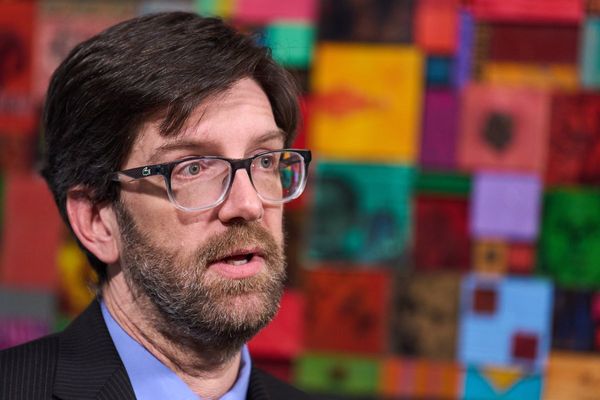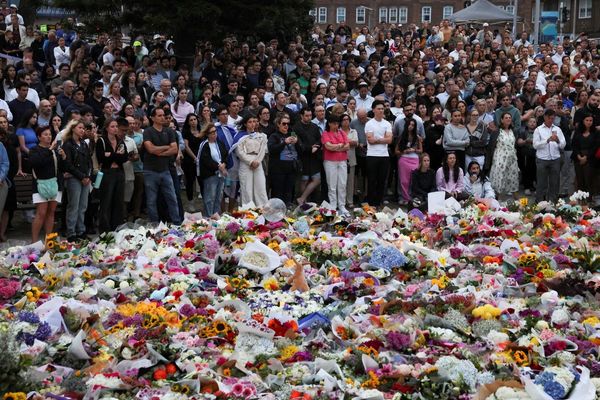
Here are five key takeaways from the Queensland budget.
Wage fight looms
Few will have watched the state’s budget as closely as the Queensland’s public sector unions.
The nurses union is locked in negotiations with the government over its offer of just 8% higher wages over three years. The nurses say the offer is a breach of an election promise for the country’s highest wages.
Enterprise bargaining is soon to begin for police, firefighters and school teachers.
The budget forecasts a substantial decline in growth in “employee expenses” – which include both wages and headcount. Beyond next year they will be “contained to a more sustainable average annual rate of 3.5%”.
The treasurer, David Janetzki, said the number reflected an increase in headcount and “a factoring in of wage increases”.
“And that’s the number. That’s the number,” he said.
Is the coal boom over?
The Liberal National party government has been urged to review the state’s coal royalty rates, which sought to give the state a bigger share of super profits when prices were at record highs.
Those royalty hikes gave the state a $10bn windfall in the first year. But the scheme was designed so that the higher rates only kick in when prices were extraordinarily high. Now those prices have dropped. And the reality is that coalminers – who say they prop up the state economy – are no longer really propping up the state’s economy.
“The former government absolutely creamed the coal royalties,” Janetzki said.
“In 22/23 and 23/24 [the Labor government] took more in those two years than what will take in four out of coal royalties.”
Red ink
There’s always a post that comes back to bite you.
Two years ago, Janetzki and David Crisafulli railed against the state’s growing debt.
“We’ve got debt numbers that have gone from $72bn when the Palaszczuk government was elected, more than doubling in less than a decade to $147bn,” Janetzki said in a post on Crisafulli’s TikTok feed.
“What this means is there’s going to be worse services for Queenslanders in the long run.”
The budget predicts Queensland’s state debt will top $205bn before the end of the decade.
Janetzki says that borrowing figure will be lower than projected under Labor. That line won’t cut it with fiscal conservatives, who will note there appears to be no prospect of reining in that debt any time soon.
The budget also predicts deficits for the foreseeable future, though Janetzki says there is a “path to surplus”.
First home equity scheme with ‘generous’ criteria
The centrepiece announcement of budget day was a new shared equity scheme for first home buyers.
The program involves the state taking an equity stake in homes worth up to $1m, and allowing buyers to get into the market with a deposit of as little as 2%.
The criteria is far more generous than the similar federal scheme – it would be open to individuals earning less than $150,000 a year, or couples earning less than $225,000 a year combined.
At his budget press conference, Janetzki faced some difficult questions about the viability – and unintended consequences – of such a scheme, amid concerns that it could lead buyers into mortgage stress.
“This program has the highest income thresholds of any related scheme in the country,” Janetzki said.
“We have a generation despairing as their home ownership dream fades from view. Simply accumulating a deposit has put home ownership beyond the great majority who cannot turn to their parents for a contribution.”
Energy system cuts on the way?
Slashing investment in green power was one of the LNP’s first moves after taking government, and the budget shows little change in coming years.
The gigantic Pioneer-Burdekin scheme – once billed as the world’s biggest hydroelectric project – is officially dead.
Meanwhile, Labor’s other big battery project, Borumba, has been delayed and reportedly shrunk. The budget includes $3bn over four years for the $18bn project.
The LNP has finally revealed its long-awaited alternative to Labor’s hydro power plan, backing two smaller pumped hydro projects.
It will invest $79m into acquiring the Mount Rawdon and Big T pumped hydro projects. The state will also fund a gas project near Chinchilla, investigate funding another at Swanbank, and consider funding the Lockyer Energy Project, a hydro scheme.
And it will spend $1.6bn keeping the state’s coal fleet operating over five years.
More than $100m will be invested at the Meandu and Kogan Creek mines in 2025/26.







